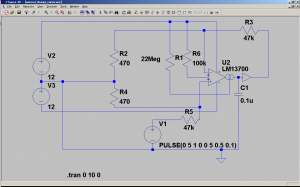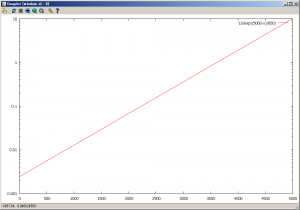 I’ve started studying voltage controlled envelope generator designs, since I have several use cases of it.
I’ve started studying voltage controlled envelope generator designs, since I have several use cases of it.
An envelope generator usually is implemented by an RC charging circuit with potentiometers as resistors. However, such design does not capable of quick parameters change. So voltage control (or digital control) functionality is necessary for better articulation. Also, non-potentiometer control is crucial to polyphonic voices.
There are several approaches to design voltage controlled envelope generators. This article describes about an analog approach which I tried first.
Instead of using potentiometers, I’m using an OTA (Operational Transconductance Amplifier). Linear curve envelope generator is easier to build when you use OTA, but I try exponential curve that gives natural volume transitions.
Charging Circuit
Here is the replacement of RC charging circuit. You can control its speed by the OTA control current.
Simulated behavior looks good.
Relationship between Control Voltage and Time Constant
Time constant of the charging circuit should be inverse proportion of OTA control current. So it must be uneasy to use if you proportionally map CV to the control current.
It should be easier to use if the circuit has exponential control voltage/current converter which should look like following:
Analog Voltage Control Envelope Generator
Here is the schematics of the circuit that was tested.
This is for proof of concept, so the quality was too poor for practical use. However, the circuit worked as expected.
Pros and Cons
Pros:
- Very smooth volume transition when used with linear VCA.
- No digital noise.
Cons:
- Circuit is complex.
- Need more improvement, possibly by changing circuit.
- Versatility is poor. For example, if you want to enhance functionality such as splitting decay curve into two phases (A D1 D2 S R), you have to modify circuit.
- It also will be complex if you want to add a feature to switch the curve between linear and exponential.









